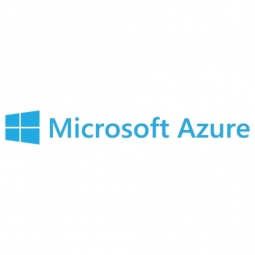Download PDF
ArcelorMittal's Data-Driven Transformation with Azure for Industry 4.0
Technology Category
- Functional Applications - Computerized Maintenance Management Systems (CMMS)
- Functional Applications - Manufacturing Execution Systems (MES)
Applicable Industries
- Automotive
- Mining
Applicable Functions
- Maintenance
- Product Research & Development
Use Cases
- Manufacturing System Automation
- Predictive Maintenance
Services
- Cloud Planning, Design & Implementation Services
The Challenge
ArcelorMittal, a leading steel and mining company headquartered in Luxembourg, was facing challenges with its on-premises data centers. The company had data centers in almost all major European countries where it stored its SAP applications. However, maintaining these data centers was becoming increasingly costly and inefficient. The company was investing heavily in the servers and infrastructure needed to operate them. The company began to question the viability of these data centers and whether it was time to move their SAP and non-SAP workload to the cloud. The challenge was to find a solution that would not only reduce costs but also provide a platform for innovation and growth.
About The Customer
ArcelorMittal is a global leader in steel manufacturing, operating in more than 60 countries around the world. The company runs steelmaking facilities in 17 countries and posted $53.3 billion-worth of revenue in 2020. Producing a mammoth 71.5 million metric tons of crude steel and 58.0 million metric tons of iron ore every year, ArcelorMittal has thousands of clients spread across several sectors, including automotive, construction, packaging, energy, and transport. The company employs some 71,000 people across 400 European locations. ArcelorMittal's mission is to invent smarter steels for a better world.
The Solution
ArcelorMittal partnered with NTT DATA Business Solutions AG to migrate its SAP applications to the cloud using Microsoft's Azure. The migration process, which began in spring 2020, has resulted in most workloads now being fully operational on Azure. This has provided ArcelorMittal with a transparent solution that allows them to make informed decisions on where they can optimize IT resources and control costs. The company is now using Azure solutions to enable intelligent analytics to support their data scientist team and their work on offers management. The company has also started producing reports and dashboards that provide real-time access to data, enabling them to react based on it. The next step for ArcelorMittal is to implement new predictive maintenance tools in ArcelorMittal Europe – Flat Products, combining SAP data with data from production lines to better organize production strategies and predict where maintenance is needed.
Operational Impact
Quantitative Benefit
Related Case Studies.

Case Study
Integral Plant Maintenance
Mercedes-Benz and his partner GAZ chose Siemens to be its maintenance partner at a new engine plant in Yaroslavl, Russia. The new plant offers a capacity to manufacture diesel engines for the Russian market, for locally produced Sprinter Classic. In addition to engines for the local market, the Yaroslavl plant will also produce spare parts. Mercedes-Benz Russia and his partner needed a service partner in order to ensure the operation of these lines in a maintenance partnership arrangement. The challenges included coordinating the entire maintenance management operation, in particular inspections, corrective and predictive maintenance activities, and the optimizing spare parts management. Siemens developed a customized maintenance solution that includes all electronic and mechanical maintenance activities (Integral Plant Maintenance).

Case Study
Underground Mining Safety
The goal was to produce a safety system to monitor and support underground mining operations; existing systems were either too simple (i.e. phone line) or overly complex and expensive, inhibiting deployment, and providing little-to-no support in event of an accident. Given the dangerous nature of the mining work environment and the strict regulations placed on the industry, the solution would have to comply with Mine Safety and Health Administration (MSHA) regulations. Yet the product needed to allow for simple deployment to truly be a groundbreaking solution - increasing miner safety and changing daily operations for the better.

Case Study
Monitoring of Pressure Pumps in Automotive Industry
A large German/American producer of auto parts uses high-pressure pumps to deburr machined parts as a part of its production and quality check process. They decided to monitor these pumps to make sure they work properly and that they can see any indications leading to a potential failure before it affects their process.








